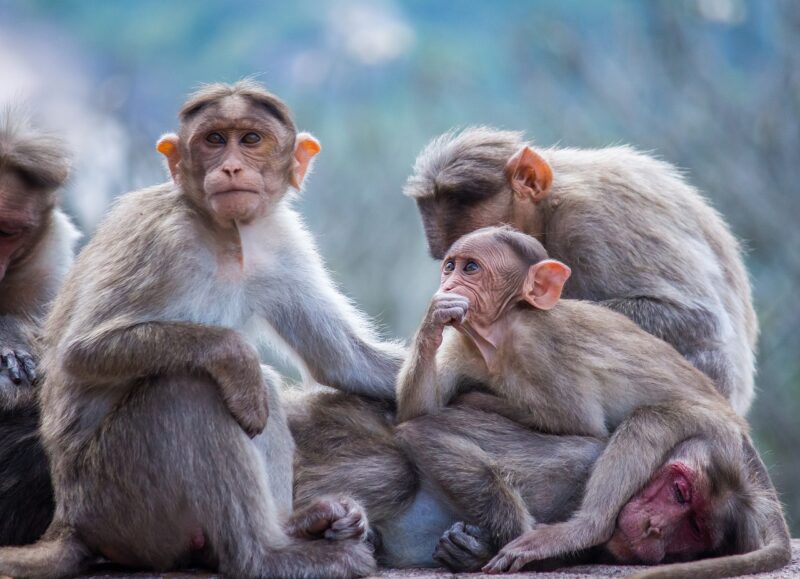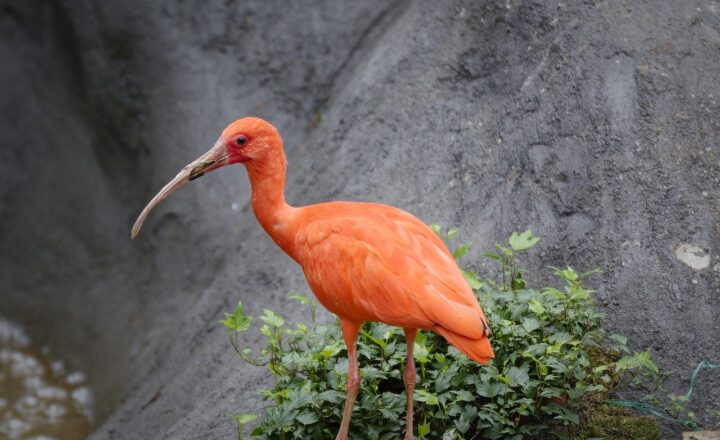The Evolution of Monkeys and Apes: How Primates Differ and Why It Matters
November 14, 2024

The evolutionary journey of primates is a fascinating tale of adaptation and survival that spans millions of years. Among the diverse group of primates, two main categories—monkeys and apes—illustrate significant differences in their anatomy, behavior, and evolutionary history. Understanding these differences not only provides insight into our own origins, but it also helps us comprehend the complexities of the animal kingdom. In this article, we will explore the evolution of monkeys and apes, their distinguishing features, and the ecological importance of these primates in today’s world.
1. The Origins of Primates
The primate order includes a wide array of species, including lemurs, lorises, tarsiers, monkeys, and apes, with a common ancestor believed to have existed around 60 million years ago. Fossil evidence suggests that the earliest primates were small, nocturnal creatures living in trees, which enabled them to escape predators and exploit fruit and insects.
As the climate changed, primates adapted to various environments. This led to the divergence of the two distinct lineages that would become modern monkeys and apes. This evolutionary split allowed these groups to develop unique adaptations suited to their lifestyles, habitats, and diets.
2. Monkeys vs. Apes: Key Differences
Although both monkeys and apes belong to the primate order, they exhibit several notable differences:
- Physical Characteristics: Monkeys typically have tails, whereas apes do not. This is one of the most obvious differences. Apes, including gibbons, orangutans, gorillas, and chimpanzees, generally have larger brains compared to body size than monkeys, which correlates with their more complex behaviors and social structures.
- Locomotion: Monkeys are often seen utilizing all fours for movement and are adept at leaping between branches, while apes are primarily knuckle-walkers or brachiators, meaning they swing from branch to branch using their arms to lift their bodies. This reflects the differing evolutionary adaptations to their respective environments.
- Social Structures: Monkeys often live in larger social groups and maintain more pronounced hierarchies, whereas apes tend to form smaller family units with relatively egalitarian structures. This impacts their communication styles and interaction, as apes are generally more expressive and engage in tool use and problem-solving behaviors that showcase their intelligence.
These differences highlight the diverse evolutionary strategies developed by each lineage, showcasing how adaptations can lead to varying survival strategies in similar ecological niches.
3. The Evolutionary Journey of Apes
The evolutionary pathway of apes diverged from that of monkeys approximately 25 million years ago. This led to the emergence of the lesser apes, which include gibbons and their relatives, before the rise of the great apes, which comprise orangutans, gorillas, bonobos, and chimpanzees.
- Lesser Apes: Gibbons, often described as the “hylobatids,” are known for their incredible agility and elaborate songs used for communication. Their social structures consist of monogamous pairs and their offspring, utilizing the dense forest canopy for movement and feeding.
- Great Apes: These apes exhibit remarkable cognitive abilities and emotional intelligence. The great apes also share up to 98% of their DNA with humans, making them critical to understanding our evolutionary history. Their behavior ranges from intricate social interactions to the use of tools for feeding and control of their environment.
The evolutionary pressures faced by apes, such as habitat loss, competition for resources, and changes in climate, have shaped their behaviors and adaptations in ways that reflect their survival strategies in the wild.
4. The Evolutionary Journey of Monkeys
Monkeys are divided into two major groups: New World monkeys and Old World monkeys, each demonstrating unique evolutionary adaptations adapted to their environments.
- New World Monkeys: Native to the Americas, these monkeys have prehensile tails, which allow them to grasp branches to move easily through treetops. They also have a diverse diet, including fruits, insects, and small animals, which their social structures often reflect as they live in troops that allow for cooperation in navigating their environment.
- Old World Monkeys: Found in Africa and Asia, Old World monkeys do not possess prehensile tails and have a varying diet that includes fruits, seeds, roots, and even small mammals. They have more complex social systems and exhibit behaviors that showcase true intelligence, such as tool use and complex communication methods, indicating a rich tapestry of social interactions and adaptation strategies.
These adaptations underscore the importance of ecological niches that monkeys occupy in their environments, facilitating their survival amidst challenges in the wild.
5. Why Understanding Primates Matters
The study of primates, particularly the evolution of monkeys and apes, extends beyond mere academic curiosity—it has profound implications for conservation efforts and human understanding of our own place in the animal kingdom.
- Conservation Significance: Many primate species are critically endangered due to habitat loss, poaching, and climate change. Understanding the evolutionary history and ecological roles of these species allows conservationists to promote effective strategies for preserving their habitats and ensuring species survival.
- Insights into Human Evolution: As our closest relatives, the study of apes and monkeys makes it possible to understand human evolution. Research into primate behavior, social structures, and genetics provides valuable insights into the origins of human traits such as complex language, socialization, and emotional intelligence.
By appreciating the complexities of primate evolution, we can work towards fostering a more sustainable future that respects both our own species’ history and the biodiversity of which we are a part.
Conclusion
The evolution of monkeys and apes is a testament to nature’s ability to adapt and thrive in a range of environments. By understanding the distinctions between these two groups, we gain valuable insight into our own evolutionary journey and the importance of preserving the rich biodiversity that exists today. As we move forward, let us remember our connection to these remarkable primates, not just as distant relatives but as vital components of our planet’s ecosystem that deserve protection and respect.








